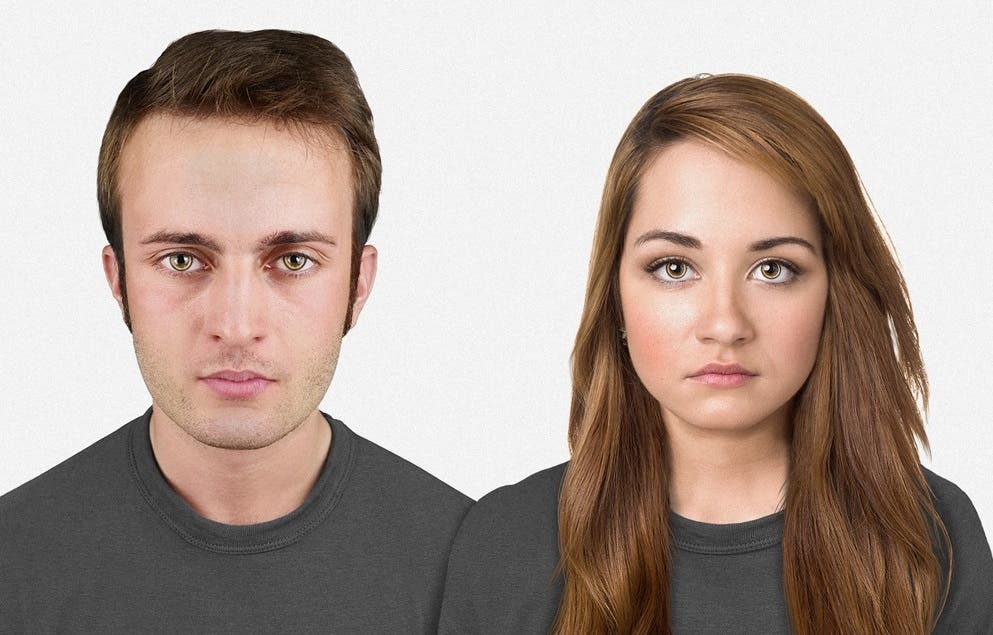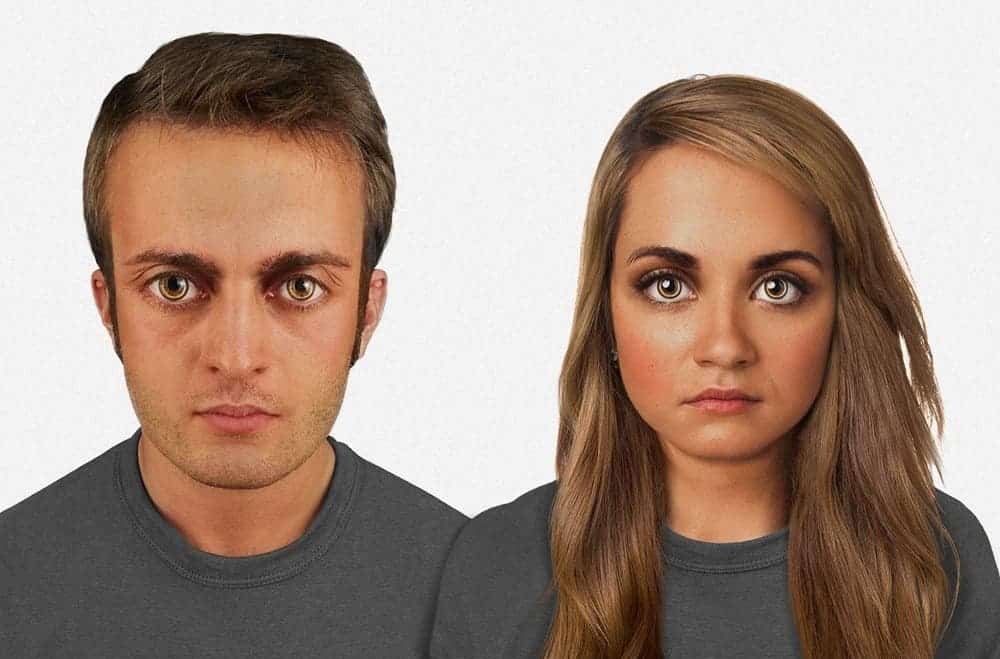
Our general appearance and dominating facial features have come a long way since the days of our early homo sapiens ancestors some hundreds of thousands of years ago. For instance the size of our brain, and of course skull that houses it, has grown in size three times since then. Moreover, medical records only a few hundreds of years old show that the human skull has evolved in a significant way. It’s clear that our appearance will chance drastically in the thousands of years to come, just how drastic or in what manner this will happen can only be speculated.
Artist and researcher Nickolay Lamm partnered with Dr. Alan Kwan of Washington University, a computational geneticist, and attempted to make some educated guesses on how humans might look like 20,000 years, 60,000 years and 100,000 years in the future.
Their predictions are based on how living environments might look like in the future, seeing how this has always been the main biological evolutionary marker for all organisms, as well as engineering technology that will allow humans to actively manipulate their bodies in order to accustom their needs. For instance, records of both old modern human skulls as well as early human ones, show that they have evolved to less prominent facial features but higher foreheads, a trend which is expected to continue in the future.

This in term will allow humans in the future to accommodate larger brains, which should help us think of better ways of colonizing our solar system and maybe those beyond. Dimmer lighting conditions, since a lot of people would be living farther away from the sun, will cause eyes to grow bigger almost to anime-like proportions. Also larger nostrils for easier breathing in off-planet environments, more pigmentation of the skin and denser hair to contain heat loss from a larger head are just a few other consequences of living in space or other worlds.

Fashion is a factor that has also been taken into account. Technology in the future will certainly allow people to mold their appearance even to extreme ranges without too much effort or pain. As such, it’s reasonable to assume most people in the future will sport facial features that humans find fundamentally appealing: strong, regal lines, straight nose, intense eyes, and placement of facial features that adhere to the golden ratio and left/right perfect symmetry, Kwan says.

Some 100,000 years in the future, a frightened teddy bear gaze might not seem most attractive, but what how would our own ancestors rate our appearance today?






